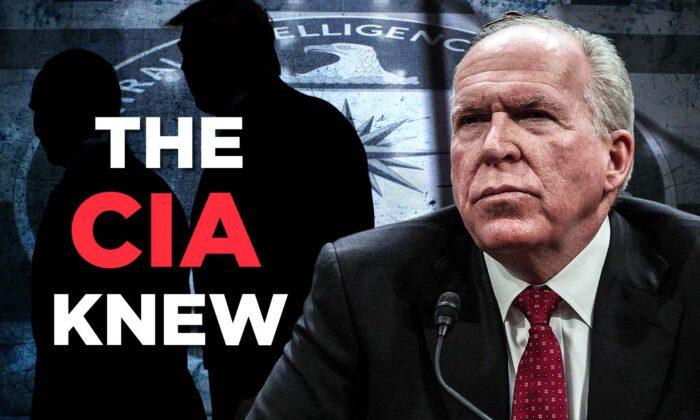On July 28, 2016, Brennan briefed then-President Barack Obama on a supposed intelligence bombshell, with media sources claiming the information came from deep within the Russian government. The story that the media reported on for the next several years was that the information Obama was briefed on was about how Putin allegedly had approved a campaign to defeat Clinton and elect Trump. However, Brennan’s briefing to Obama was actually regarding Clinton’s plan to tie Trump to Russian interference in the election.
Handwritten notes that were unclassified in 2020 revealed how Clinton’s foreign policy adviser, Jake Sullivan, proposed to vilify Trump via Russian interference. Sullivan is currently the national security adviser to President Joe Biden. At the time Sullivan proposed the plan to allege a Trump-Russia collusion story, he was a senior foreign policy adviser to the Clinton campaign. Court filings made by special counsel John Durham in his case against Clinton campaign lawyer Michael Sussmann reveal that Sussmann and others connected to the Clinton campaign had indeed carried out a plan to vilify Trump by tying him to Russia.
Although then-FBI Director James Comey is said to have attended the 2016 briefing, Brennan sent the same information to FBI headquarters and to lead Trump investigator Peter Strzok. The day after the briefing, Sussmann met with Christopher Steele in his law firm Perkins Coie. In attendance were officials from Fusion GPS, an opposition research firm retained by Clinton and the Democratic National Committee via Fusion GPS lawyer Marc Elias and his firm Perkins Coie. Elias and other Perkins Coie members were also in attendance. Shortly after the meeting, Steele prepared a memo for his dossier that falsely alleged an eight-year Russian effort to get Trump elected.
The timing of these events came days before the FBI officially opened its Crossfire Hurricane investigation into Trump’s alleged ties to Russia. George Papadopoulos, an author and member of the foreign policy advisory panel to Trump’s 2016 presidential campaign, said in public news interviews that Russia may release information regarding Clinton’s emails. However, nothing he said indicated Trump-Russia collusion. Regardless, the FBI began an investigation into Trump, rather than into Clinton and the information alleging the Clinton campaign fabricated Trump’s alleged Russian ties.
Brennan went on to send a formal warning to Russia to not interfere in American elections, as well as conducting a series of congressional briefings in which he spread his narrative of Russian interference. He specifically told each congressional member that “Russia’s goals were to undermine public faith in the U.S democratic process, denigrate secretary Clinton and harm her electability and potential presidency and to help President Trump’s election chances.” However, Brennan gave a separate congressional briefing to Nevada Senator and leader of the Democratic Caucus, Harry Reid, that notably differed from his other briefings. After meeting with Brennan, Reid sent a letter to Comey on Aug. 27, 2016, noting the Trump campaign’s alleged ties to Russia and demanding that these allegations be thoroughly and publicly investigated, followed up by House Democrats asking Comey to investigate Trump-Russia collusion in the context of a hack of the DNC. Brennan, Reid, and House Democrats were no doubt fully aware that the corporate media would seize on these meritless claims and promote them relentlessly.
Brennan also created an Intelligence Community Assessment (ICA), which became the cornerstone of the false allegations of Russian collusion—a two-page summary of the Steele dossier was attached to the ICA. Although the public version of the assessment contained no real evidence and merely recycled media talking points about how a Russian TV channel had said negative things about Clinton, it was the dossier that set off a sequence of events culminating in the appointment of former FBI director Robert Mueller as special counsel to investigate. Despite having been in possession of Steele’s report since at least September 2016, aside from a few exceptions, the media did not report on the dossier until the publication of the ICA. The release of the ICA finally gave the dossier the appearance of credibility needed for the media to run with it. Regardless, the dossier was later proven to not be credible, with many of the claims in the dossier having been debunked by authorities or remaining unverified.
Although the FBI, politicians, and the corporate news media baselessly paraded the Russia collusion narrative, the fact is that they had legitimate evidence of the Clinton campaign’s plan to falsely accuse Trump. Equally concerning is that the motivation behind these accusations were to distract from Clinton’s email scandal and in turn influence the presidential election in her favor.
Watch the full episode for more in depth information and share this article so others can know the truth.





